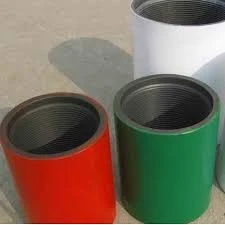- Afrikaans
- Albanian
- Amharic
- Arabic
- Armenian
- Azerbaijani
- Basque
- Belarusian
- Bengali
- Bosnian
- Bulgarian
- Catalan
- Cebuano
- Corsican
- Croatian
- Czech
- Danish
- Dutch
- English
- Esperanto
- Estonian
- Finnish
- French
- Frisian
- Galician
- Georgian
- German
- Greek
- Gujarati
- Haitian Creole
- hausa
- hawaiian
- Hebrew
- Hindi
- Miao
- Hungarian
- Icelandic
- igbo
- Indonesian
- irish
- Italian
- Japanese
- Javanese
- Kannada
- kazakh
- Khmer
- Rwandese
- Korean
- Kurdish
- Kyrgyz
- Lao
- Latin
- Latvian
- Lithuanian
- Luxembourgish
- Macedonian
- Malgashi
- Malay
- Malayalam
- Maltese
- Maori
- Marathi
- Mongolian
- Myanmar
- Nepali
- Norwegian
- Norwegian
- Occitan
- Pashto
- Persian
- Polish
- Portuguese
- Punjabi
- Romanian
- Russian
- Samoan
- Scottish Gaelic
- Serbian
- Sesotho
- Shona
- Sindhi
- Sinhala
- Slovak
- Slovenian
- Somali
- Spanish
- Sundanese
- Swahili
- Swedish
- Tagalog
- Tajik
- Tamil
- Tatar
- Telugu
- Thai
- Turkish
- Turkmen
- Ukrainian
- Urdu
- Uighur
- Uzbek
- Vietnamese
- Welsh
- Bantu
- Yiddish
- Yoruba
- Zulu
tubing collar
Understanding Tubing Collars in Oil and Gas Operations
In the oil and gas industry, the integrity of drilling and production operations is paramount. One crucial component that plays a significant role in ensuring this integrity is the tubing collar. Tubing collars are fittings installed in the tubing string to facilitate various essential functions. They serve as connectors and provide mechanical support, but their importance goes far beyond mere linking.
A tubing collar is generally positioned at specified intervals along the tubing string, which is used to transport oil or gas from the wellbore to the surface. The collars themselves usually come with increased wall thickness and are designed to endure high pressures and harsh conditions typical in hydrocarbon exploration and production. Typically made of steel or other resilient materials, these collars can withstand the challenges posed during drilling and production operations.
One of the primary functions of tubing collars is to provide a means for attaching various accessories, such as centralizers, flow control devices, and safety valves. These elements are crucial for maintaining the efficiency of the operation and protecting the well from potential hazards. Moreover, the collars can help to prevent issues like scalloping, which can occur when fluid dynamics lead to uneven wear on the tubing.
tubing collar

In addition to providing structural support, tubing collars also come equipped with features that enhance wellbore integrity. For example, some collars have special threads or seals designed to minimize leakage, ensuring that hydrocarbons do not escape into the environment. This is particularly important in today’s regulatory landscape, where environmental sustainability and safety are primary concerns.
Moreover, tubing collars play a critical role during well interventions and workover operations. During these processes, operators often need to replace sections of tubing or install new equipment. The accessibility and usability of tubing collars make these operations significantly more straightforward, ensuring that downtime is minimized, and productivity is maximized.
It's worth noting that the design and specification of tubing collars can vary based on well conditions, the types of fluids being handled, and specific operational requirements. Therefore, selecting the right type of collar is critical for the success of the operation. Engineers often rely on extensive data and modeling to determine the appropriate collar specifications that will best suit the technical and environmental demands of a given well.
In conclusion, tubing collars are indispensable components in the oil and gas sector. They not only facilitate the safe transport of hydrocarbons but also enhance the overall integrity and efficiency of drilling and production operations. As the industry continues to evolve, especially with advancements in technology and a focus on sustainability, the role of tubing collars will likely see further innovations and improvements, reinforcing their significance in modern oil and gas endeavors.
-
Tubing Pup Joints: Essential Components for Oil and Gas OperationsNewsJul.10,2025
-
Pup Joints: Essential Components for Reliable Drilling OperationsNewsJul.10,2025
-
Pipe Couplings: Connecting Your World EfficientlyNewsJul.10,2025
-
Mastering Oilfield Operations with Quality Tubing and CasingNewsJul.10,2025
-
High-Quality Casing Couplings for Every NeedNewsJul.10,2025
-
Boost Your Drilling Efficiency with Premium Crossover Tools & Seating NipplesNewsJul.10,2025







